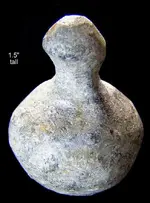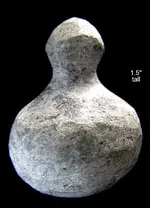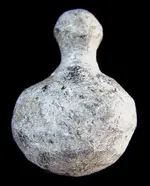Harry Pristis
Bronze Member
- Joined
- Feb 5, 2009
- Messages
- 2,353
- Reaction score
- 1,294
- Golden Thread
- 0
- Location
- Northcentral Florida
I acquired this with a small number of excavated midden items, mostly animal remains, just typical stuff from a Central Florida midden.
This plummet, on the other hand, is unusual. The material is not native to Florida. There is a flash of a phenocryst in the shoulder (visible as a dark spot in photo B). That tells me it is not a sedimentary rock, and all native rock in Florida is sedimentary.
The piece appears to be unfinished. At least, there are still facets or flat places where the material was ground.
Any opinions on the authenticity of this plummet?
This plummet, on the other hand, is unusual. The material is not native to Florida. There is a flash of a phenocryst in the shoulder (visible as a dark spot in photo B). That tells me it is not a sedimentary rock, and all native rock in Florida is sedimentary.
The piece appears to be unfinished. At least, there are still facets or flat places where the material was ground.
Any opinions on the authenticity of this plummet?
Upvote
0


















